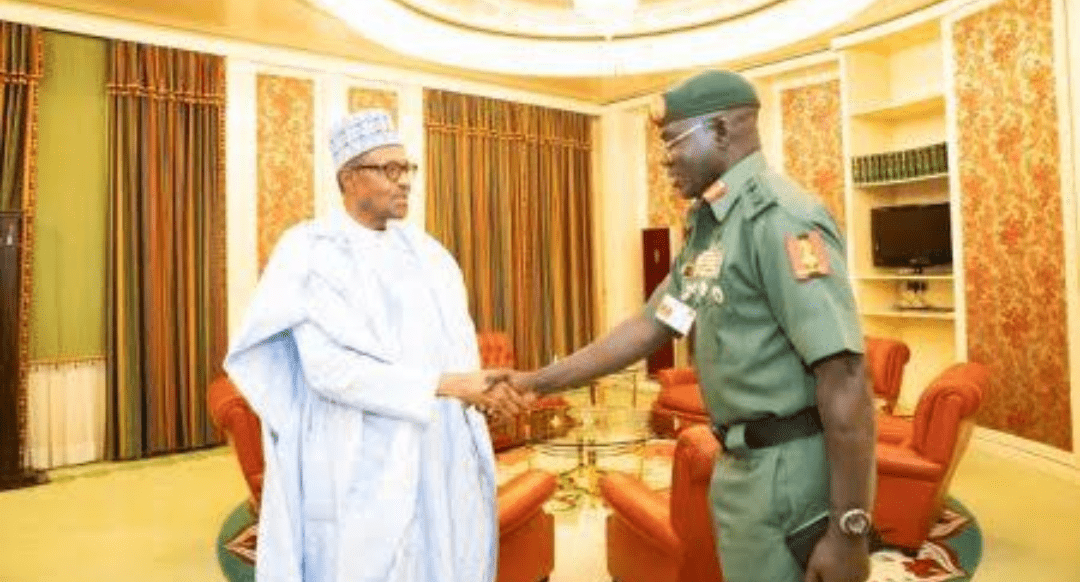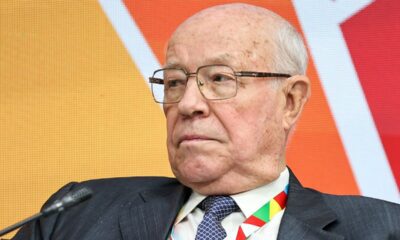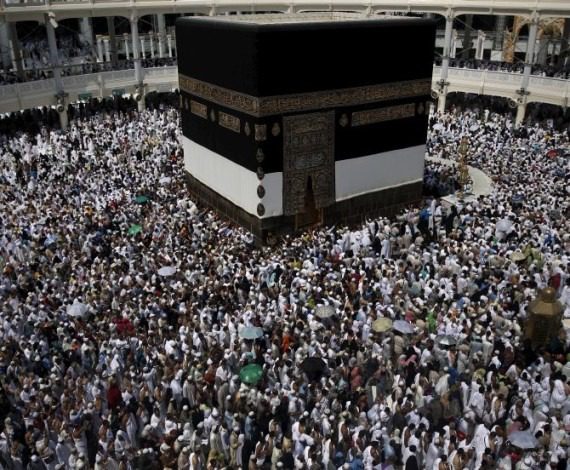National Issues
The frantic struggle of the Nigerian counterinsurgency since 2009: Time for a more deliberate approach? -By E.O. Ojelabi
Recently, Nigeria seemed to be making relevant advancements in realising the extent of damages some fundamentalist training centres and the Almajiri system in the country, are doing to the polity especially in relation to the sustenance of banditry, terrorism and insurgency activities in the north.

“even if the “alter egos” of the organisations like Mohammed Yusuf, 2009, Osama Bin Laden 2011 and the erstwhile ISIS leader Abu Bakr al-Baghdadi in 2019 are ‘neutralised’, others of equal or perhaps, more virulent personalities like the Abubakar Shekau will take over and the circle continues more viciously and at tremendous cost to the state and her counterinsurgent effort.”
In a world where insurgencies of religious leanings have taken over the anti-state rebellion, counterinsurgency has to take special notice of certain issues in regards to the changing dynamics of operational tactics and strategy. Counterinsurgency is a military strategy as its name depicts, deployed to counter insurrections, and armed insurgency that may arise within a polity. Even though, some critical research may describe it as just a “strategic narrative”, the undeniable truth is that, due to its destructive and disruptive tendencies, insurgency naturally necessitates the adoption of counter-insurgency measures by the state. However, these measures have always depended heavily on the military capacity of the counterinsurgent state AND NOTHING MORE!!!
In an isolated study, Rapoport identified the most recent development of religious insurgency and its deployment of terrorist tactics in its pursuits. The nexus between religion and the state as he concluded, is the cross-reliability between modern state politics, political currency/patronage/clientelism, mobilization, singularity and the exclusivity of identity other than logic afforded politics by religious uniformity. This essential politico-religious factor was pivotal to the Ayatollah’s Iranian Revolution of 1979. This revolution was calculated by researchers and academics of world history as a major event that may have opened the floodgates for the popularity of the marriage between religion and the state in the context of a theocratic entity as post-1979 Iranian government emerged to be.
This idea of state and religion became much evident and visible in Nigeria in a socio-cultural connection between terrestrial/secular life, the Islamic religion and state politics most notably in Northern Nigeria even before 1960. Apart from the 1980 Maitatsine Riot, the connect became more obvious when Nigeria was confronted by the Sharia debate in the 1979 Constitutional Review process. The debate would occupy a long-lasting discuss in the Nigerian history of constitutional developments as it drew major strength from the social-cultural realities of the larger North as the reason why it would be fair on her Muslim societies, the ‘Ummah’ to be administered under the pious provisions of the Sharia. Though the 1979 and 1999 constitutions had provisions, the law only came into political effect in 2000 when Zamfara state adopted and ratified the law within its state territory in the second year of Nigeria’s return to civilian rule or ‘democracy’. The Development had given momentum to the further development of different forms of congregations among the faithfuls in the North with differing ideologies and philosophies. The Almajiri system/Islamic education and ideology gatherings like the Jamā’at Ahl as-Sunnah lid-Da’wah wa’l-Jihād among others were some of the many phenomena that emerged to be prominent subsequently. The results of this development have been treated by a variety of academic and non-academic works. The chaos that the development turned into recently in 2002 has sharply developed into insurgency (of the type above-defined) and the traditionalist military approach to it has well; been traditional.
Strategy scholars as Von Clausewitz, Rapoport, David Gulala, Lidel Hart, Robert Thompson and Quincy Wright among others agree with the adaptation of pre-existing models and approaches to circumstantial issues especially in regards to socio-political issues such as insurgency. The state will not suddenly develop specially dedicated forces to address insurgency, it must first deploy the forces within its capacity. However, the onerous issue of counterinsurgency cannot be treated in a “one size fit all” manner as Sun Tzu, the popular Chinese strategist indicated; every war has its own peculiarities. Von Clausewitz also spoke of the fog of war wherein he described extensively the amount of ingeniousness a shrewd commander of the armed forces must show in an unexpected and unprecedented situation or a rapidly changing reality in war.
It is in this spirit that this article wishes to call the attention of strategists and planners of the Nigerian Counterinsurgency (COIN) to certain peculiarities of insurgency case in the North-Eastern part of Nigeria. Military strategists have always advised that states’ efforts to COIN should be wary of adopting the traditionalist approach to COIN. This is because the environment of international politics since the end of the 2nd world war has been largely unpredictable and best described as unstable and anarchic. What should become disturbing to planners and strategists is that unlike in the previous waves, the international environment wherein the new religious wave operates, eliminates government exclusivity to arms deployment which by implication means, though asymmetric to the state’s, insurgents also have some capability of force deployment. State military is not the exclusive feature of the counterinsurgent state anymore unlike when the colonialists had overwhelming forces on their side to quickly reign in on the insurgency, disperse them and greatly diminish their capacity like the Aba Women and the Epe riots of the early 20th Century in former colonial Niger Area. To make it worse, the insurgents in realisation of their weaknesses made up for them in guerrilla tactics and other strategies of irregular and/or hybrid warfare.
Furthermore, the recent wave of insurgency is idealistic, psychological and virtually like a virus, invincible. Not all Muslims are extremists or fundamentalists. In fact, the extremists barely accounts for 10% of the faithfull’s population within a polity according to various quantitative researches. But, the situation becomes more intricate when we consider the possibility that insurgents, because of the dynamics of unconventional warfare, could be hiding in plain sight in the society mixed with the general population. As mutation studies have shown, the capacity of insurgents to wreak untold havoc has increased tremendously because of the adoption of indirect and quite unconventional warfare tactics with diminishing levels of restraints.
Unconventional warfare is particularly complicated because of the seeming lack of restraint shown particularly by the insurgent militias which in direct implication, places the traditional and rather conventional/conservative military at a major disadvantage. Even when the military adopts flexibility and take special measures such as the development of counter-guerrilla warfare tactics, creation of special forces, sweep operations, reconnaissance ops, information gathering, information management through propaganda in order to reduce the effects of the insurgency tactics and paint the military in good light to the general population and the observing/monitoring international community, its overall effects seems to be playing catch up with the insurgency which always seems to find a way to elude strategic reach in Nigeria since 2009 and relevant example of this is the famous ‘technicality’ of its defeat rhetoric in 2015.
In this circumstance, what could the Nigerian counterinsurgent effort do to address this strategic gap marked by the loss of several important lives of Servicemen and innocent civilian citizens? The answer to this question is the awakening of certain consciousness in strategy planners on the underlying nature of the conflict. Counterinsurgency must re-strategise with major regards to addressing every socio-cultural, military, political and economic challenges the insurgents presents it – what Fearon and Latin described as the ‘Conditions that favours insurgent technology’.
A noticeable gap so far in the Nigeria approach to the phenomenon of counterinsurgency has been the absolute neglect of the socio-cultural dynamics of the insurgency and their immediate society. As abundantly explained earlier, the new religious insurgency is such that bears so much potential because of the ideological and psychological aspect of the conflict. Religious insurgency as the subject suggests, enjoys socio-cultural acceptability of uniformity and adherence and as thus, expands its frontiers of identity-based mobilization managed by ‘local knowledge’. This situation mixed with the traditional insurgency features of acculturation, societal mixing and indwelling among the civilian population means that the counterinsurgent state and her prosecuting military cannot blazingly and utterly attack the civilian population in the name of counterinsurgency. This was the thought behind the concept of winning the “hearts and minds” of the general population in the western rhetoric of counterinsurgency. The idea was to endear the adjoining civilian population to the counterinsurgency military and the state and use that advantage to isolate and eliminate insurgent characters in combing operations. This tactic and several other like population control and coercion (like the IDP camps), population terror and self-defense creation (like the creation of the CJTF) are also options available to the military to adopt but counterinsurgency question yet becomes more difficult to answer when one examine the progress of the Nigerian (in North-East Nigeria) and U.S.-NATO practices in Afghanistan and Iraq since 2009, 2001 and 2003 respectively.
Contrary to projected results, these tactics are all less effective as attempts at all these are more likely to project to citizens the idea of state coercion and further alienate the civilian population to either intra-state or expeditionary military occupation even more worse in a country where the per capita income seriously depletes her ability to maintain high military and policing capabilities, provision of public goods, provisions of good accessibility among other issues of proxy values in the “insurgency supportive” international environment. In the alternative, this article wishes to suggest to the counterinsurgent state measures which involves the deployment of counter-ideological and psychological approach to the problem of recent religious wave of insurgency.
The Nigerian case just like that of other states undergoing the problem of new religious wave of insurgency and terrorism is that of extremist Islamist insurgency which has now been complicated by several other value factors such as international intervention, rough terrain (accessibility issues), low budgetary power of the state and its implication on police and military capabilities among many other issues. The phenomenon (Islamic insurgency) just as in Iran in 1979, can be assessed by examining the nexus between religion and state. It uses the ills in society prevalent under ‘secular’ rule such as economic degradation, bad governance, lack of infrastructure, poverty, hunger, illiteracy, presence of a large restive youth (largely male population) among others to garner public opinion and influence mobilization of militias who are to some extent, followers or adherents and, in some advanced cases, paid machineries deployed in the insurgents’ militia. While the part of the militias is the most important core of their structure, the convinced ideologues who will willingly strap-on ieds with the intention to detonate same in a public space killing as much as many people along with themselves, present the bigger problem to the concerted effort of the state’s counterinsurgency strategy. This speaks to the fear that while these set of people still live among the general public, even if the “alter egos” of the organisations like Mohammed Yusuf, 2009, Osama Bin Laden 2011 and the erstwhile ISIS leader Abu Bakr al-Baghdadi in 2019 are ‘neutralised’, others of equal or perhaps more virulent personalities like the Abubakar Shekau will take over and the circle continues more viciously and at tremendous cost to the state and her counterinsurgent effort. What should be more addressed are merely physical people, but a permissive culture of violence, impunity, an ideology of extremism and fundamentalism.
The question now, therefore, is what is the way forward?
Two major examples come to mind when trying to chart a path for the execution of a successful counterinsurgency in a situation like Nigeria and they are Saudi Arabia and Indonesia. Immediately after the successful overthrow of the Shah Pahlavi’s government in February, 1979, major Muslim States in the middle-east were struck with the gyration of the Islamic state frenzy. By November, 1979 the Saudi’s ruling Monarch was confronted by Sunni extremists who believed in the Ayatollah mantra that the monarch’s closeness with the West and its differing of views on some issues with the practice of Islam has disqualified it from being the ruler of the Islamic State wherein the Holy Prophet of Islam (Peace be unto Him), was born. The rebellion gradually started in social criticism and sharply developed into the Saudi Mosque Seizure incidence in November, 20th – 4th December, 1979. The Saudi moderate clerics hitherto sitting on the fence were quickly blackmailed into supporting the sentiment of the dissidents as they were accused of looking the other way while the monarch rule them with impunity.
The Saudi monarch, in recognition of the domestic and international politics in play especially from Iran, rather than employing utterly conventional military counterinsurgency, deployed counter-ideology in the Wahabist Sunni ideology through what conflict theorists call ‘political corruption’ enabled by the abundance of her ‘oil money’. The deployed ideology tactically dissuaded the populace and hitherto hardliners from seeking to violently change the established authority and preached submission to state authority regardless of opposition to government style or nature of ruling as long as it is Islamic. The new idea made insurgency, especially armed insurgency distasteful and sound like heresy in few years after the move.
By the mid-1980s, the Saudi Monarchy had identified the extremists and opposition extremists in its polity, arrested and shipped many out of the state to places like Iran to form active opposition to the Iranian Islamic ideology of the Shia, Sharia, theocratic government. The state’s foreign policy was also reflected in other states like Syria, even the U.S. had to welcome Saudi’s run away dissidents and opposition politicians who dared attempt to violently vary the position of the monarchy. As an insurance move, the Saudi government also sponsored some of Islamic activities that even the west termed extreme, abroad so that Saudi would be elevated to the status of quintessential Islamic state amidst Islamic states. In other Islamic states like Syria and Lebanon, the Iranian versus Saudi proxy warfare continued as Saudi, through many means, continued to sponsor almost equally, extremists oppositions against the Iranian ideology of course, with the help of the west. The implication of this strategy is the relative peace from religion insurgency Saudi and her monarchy have enjoyed till today.
In the case of Indonesia, the story was first grim as different places suddenly went ablaze with the critical concern of and sentiment for the Iranian call for the extermination of American in the late 1970s. The reaction in Indonesia is multiple bombings targeted at the tourist area of Bali and the U.S. Consulate in Denpasar on the 12th of October, 2002. The attack which was considerably targeted at western, especially U.S. assets in Indonesia, killed about 202 people including Indonesian citizens in one day. This devastated the entire country as many families were robbed of one, two or more people in direct consequence of the incidence. The Indonesian state in response, launched a radical and relentless campaign of ‘peaceful Islam’ and arrested through the use of intelligence, many offenders found complicit in the bombings. The most interesting part of the Indonesian government’s reaction was her resolution not to immediately execute the offenders even after conviction but to include them in a peace and conflict reconciliation programme wherein the offenders and victims will meet face-to-face, share their experience. In isolated sessions, the offender will explain his reason for participating in doing what led to tragedy of the victim remorsefully suggesting, he now knows better and was brainwashed in the first instance. At the end of such sessions amidst so much expressions of emotions, perpetrators apologise deeply and reconcile with the victims who are now obligated so show they had forgiven the perpetrators, a proven social healing process.
More than absolute military-based, the approach tackles the insurgency from its core, its ideology and psychology. Victims in the socio-cultural environment such as Indonesia’s, according to psychology experts bears the great risk of joining such forces (terrorist groups) as an expression of aggression transfer or post-traumatic stress (PTS) a la post traumatic stress disorder (PTSD) and this may cause them to partake in events that affected them in search of closure and reconciliation. More so, in the case of extreme insecurity, some perpetrators like the children and vulnerable of different militias of the Sierra Leone Civil, may be victims themselves who have just been drafted into the insurgency by the insurgents because of their undue exposure and lack of state security to assure their safety among other vulnerabilities. This was one of the ideas behind post-civil war Truth and Reconciliation Commission in Sierra Leone, South Africa, Rwanda among others. This even seem like the idea behind the unpopular Nigerian amnesty extension to the caught or ‘repentant’ insurgent members. With this approach, together with the impactful intelligence-driven counter-terrorism prosecution, Indonesia practically enjoys enviable and relative peace in the areas of Islamist insurgency and terrorism subsequently. Even though she maintains a theocratic/monarchical system against the post-1989 western world order and was suspect in many accusations of international terrorist syndication and funding, by 2015 she was removed from the Financial Action Task Force blacklist of ‘Non-Cooperative Countries or Territories’ (NCCTs) as she was adjudged very corporative in international efforts against terrorism and fundamentalist insurgency.
The Nigerian counterinsurgency strategy on the other hand, can only learn a great deal from the experiences of these prime examples of counterinsurgency success if it wishes to curb the tide of costly violence that has engulfed the Northern part of the country since 2009. Many analysts usually confuse this approach with appeasement and consequently, dismiss the counter-ideology approach as benign and inadequate but as Sun Tzu said, “to win one hundred victories in one hundred battles is not the acme of skill. To subdue the enemy without fighting is the acme of skill”. Sometimes, the most qualitatively and quantitatively mundane move in ideological wars like deliberate the attack on the conspiracy of silence among prominent opinion shapers and influential figures, enforcing fast and swift consequence on all transgressions, building a psychologically-induced resistance to violence and loud counter-ideology a la deliberate peaceful Islam preaching may deal the most decisive blow on the problem.
Arriving from the above, the culture impunity, intolerance and the proclivity to resort to senseless vile violence heralded by many infamous events in the larger North – from Akaluka, 1994 to Eunice Olawale in 2016 among many others – must be eliminated. Other senseless violence and killings in the name of farmer-herder clashes, communal clashes, banditry must be aggressively resisted by the government with all it might. Citizens no matter how influential they are must be made to realise that the government will not tolerate, by any measure, any act that may compromise internal security and the complete breakdown of law and order. This must be carried out with relentless education, almost aggressive social reorientation process and swift government actions against people(s) who may attempt to commit ‘vile’ crimes in the name of fundamentalism, extremism, bigotry and/or a general arrogant-reassurance of inconsequence.
Recently, Nigeria seemed to be making relevant advancements in realising the extent of damages some fundamentalist training centres and the Almajiri system in the country, are doing to the polity especially in relation to the sustenance of banditry, terrorism and insurgency activities in the north. One would naturally think the decision needed to fix the situation is almost impossible to make because of the political currency afforded the northern political elites by the system. In Kano for instance, election watch reports have severally –since 2003 till most recently – placed child voters has constituting quite a number of the millions of vote realised in the state. The reports do not always come as surprising when one consider the apathetic nature of the Nigerian electorate. In a country of about 150 million electorates, barely do 30% vote on election days. It therefore would not be surprising if the political class explores that gap with various sharp practices as has been adequately reported in 2003.
Therefore, the recent identification and sacking of some of these schools in places like Kaduna, Kano and Ibadan among other states comes as a surprise but also is a step in the right direction. However, like the other initiatives, it could be counter-productive without a comprehensive approach that heal the psychological trauma victims of the system have undergone and without one that addresses their educational situation and addresses it with suitable and productive-base, futuristic training. By December, 2019, about 1000 pupils from these abusive establishments were released in different operations carried out by the Nigeria Police just between September and December, 2019. In a much more encouraging development, the Governor of Kanduna State, His Excellency, Gov. Nasir El-Rufai had abolished the Almajiri system in the heat of the Covid-19 situation considering that it does not necessarily make social distancing rules the easiest to enforce.
Counterinsurgency of the fourth wave in Rapoport’s categorization could best be approached from a nation-building angle. This is even more relevant to the Nigerian case because of the close similarities in the social-cultural features of the insurgency ideology and psychology and their ‘host’ moderate civilian society. This approach would involve several procedures necessary for social re-engineering for yet-to-be radicalised society and rehabilitation for victims and perpetrators to undergo healing, evaluation and reconciliation before the defining step of societal reintegration.
Arriving from the above, it is strongly advised that the Nigerian counterinsurgency strategy make a sharp turnaround from the conventionalist and conservative military approach it has engaged mostly in, to an approach that factor in the socio-cultural, ideological and psychological tactically-deliberate approach to address her peculiarities in her experience of the effects of the fourth wave of religious terrorism and insurgency. A stitch in time saves nine.
E.O. Ojelabi.
B.A. History, M.A. History and Strategic Studies
Contact @: ojelabiemmanuel@ymail.com




















